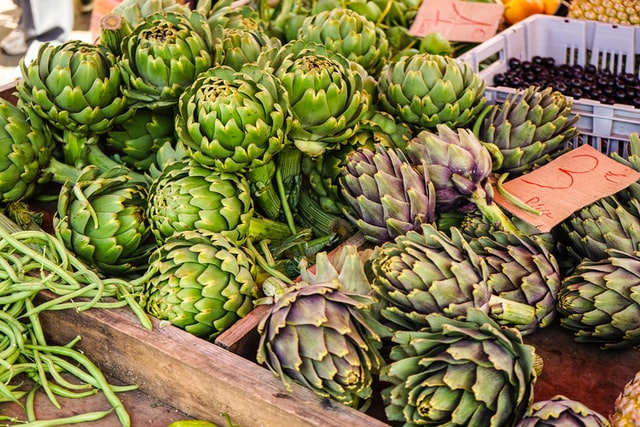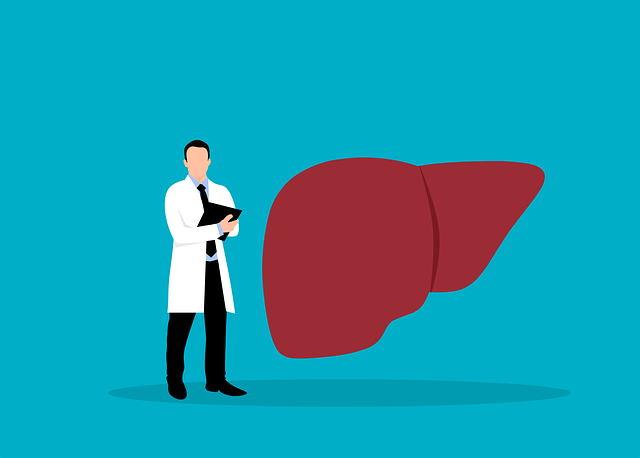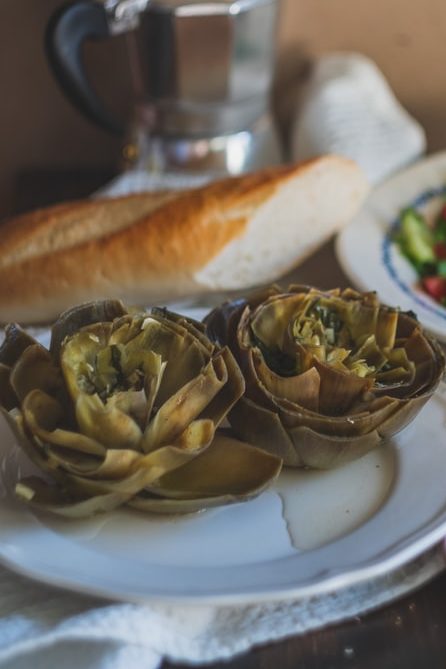Do you love eating artichokes? And did you know that by just eating this magical plant, you can acquire various benefits from it? While artichokes may not be the most accessible food to eat, the sheer volume of vitamins, minerals, and phytochemicals found in this great vegetable make them worth it. Its leaves are also loaded with nutrients with many health benefits, apart from the artichoke’s heart.
The artichoke plant was used for food and medicine as early as 400BC. In 1850, a French physician successfully used an extract derived from artichoke leaves to treat jaundice which was not improving with the drug used during those times. And in today’s blog, we will dissect all the nutrients we can get and how to cook them on the stove.
THE STORY OF ARTICHOKES

Looking at artichokes, they are really scary physically. But behind their leafy appearance, artichokes have amusing stories to feed not only your stomach but also your knowledge.
🟩 What are artichokes
Artichokes are a delicious and high-fiber vegetable that is so good for you. But what are they, really?
Artichokes look like flowers when you buy them in the store, but they’re actually the bud of a plant named Cynara cardunculus. The name artichoke comes from Alcarchofa, an Arabic name meaning “thistle flower.” Artichokes are related to thistles and sunflowers, and they’re native to the Mediterranean region.
🟩 Where to find them?
You’ll find artichoke plants growing around the world now, but most of them come from California, which produces 99 percent of the United States crop. The artichoke is actually a type of flower bud and is not related to other vegetables like carrots or tomatoes. Artichokes were first cultivated in Sicily during the Greek era. Today, most commercially grown artichokes come from California, though they are also grown in Spain, Peru, and France.
🟩 Mythology
Artichokes are one of the most ancient foods, spanning back centuries. According to mythology, when Zeus saw Cynara, a lovely young human, he converted her into a divine. Cynara returned to the earthly realm because she was homesick. Zeus then transformed her to become an artichoke when he uncovered her lie. And because of this, the scientific name of the artichoke is reflected in Cynara scolymus.
🟩 Crop introduction
Historians think that artichokes were first planted by the North African Moors around 800 A.D. After that, artichokes were brought to Italy by another Arab clan named Saracens. Artichokes are still farmed mainly in the Mediterranean part of the world. While California, with its Mediterranean-like environment, produces nearly all of the crops in the United States. And over 80% of them originate from Castroville, which is known to be the “artichoke capital of the world.”
🟩 Artichoke edible parts
The artichoke is related to other vegetables, including broccoli, kale, and cauliflower. They are typically green in color and have a firm texture when cooked. They are usually eaten boiled or steamed, and the fleshy part of the leaves can be scraped off with the teeth and eaten. The inside leaves are more tender and can be eaten, but the center contains fine hairs that you must remove before eating.
HOW TO PICK THE BEST ARTICHOKE

If this is the first time you cook artichokes, you must know the proper ways how to pick the best ones. Artichokes are exceptionally delicate, and if you don’t choose the best, your dinner might be ruined.
🟪 When to buy
If you try to look for artichokes in the supermarket, you will notice that they are available frozen, canned, marinated, fresh, and pickled. Try to buy them fresh whenever possible, as they tend to be more nutritious at this state. However, artichokes are usually dominant only in the season from March to May, so it might be challenging to find fresh ones during the off-season.
🟪 Leaves
When choosing fresh artichokes, look for the heads with tightly shrunk leaves. Spaced leaves are a sign that the artichoke has been sitting there for a long time. The leaves should also be green and firm with tinges of purple.
🟪 Preservation
At home, you can store unwashed artichokes for up to 4 days in the fridge’s vegetable section or longer if in a sealed container. Aside from this, you can also buy artichoke hearts in a can, but be sure to check their sodium content. They are typically canned in salt water to preserve their freshness. If choosing the canned variety, look for low-sodium type.
You may also rinse and drain the artichokes before eating them to remove some of the salt. Pickled and marinated artichokes are excellent if you want to add a tangy kick to your meal. They are often packed in a brine of water, vinegar, and salt. So if you are on a low-sodium diet, you may want to avoid these options or just marinate your own artichokes at home.
ARTICHOKE HEALTH ADVANTAGES
This magical plant has a lot to acquire from improving skin health, a better heart, lower blood pressure, good hair, improved immunity, and more.
🟦 Good for digestion
Artichoke leaf extract is recommended in several parts of the world to treat indigestion. The extract increases the flow of bile, which speeds food through the digestive tract. This is also the reason the extract can ease the symptoms of fullness and stomach bloating.
One study found that artichoke leaf extract can help relieve the symptoms of irritable bowel syndrome. And given that it is a fibrous vegetable, it feeds the probiotic bacteria in the gut.
🟦 Rejuvenating
Artichokes improve skin health. They are super-rich in antioxidants that slow down aging. Artichokes are also rich in vitamin C, which is one of the most significant contributors to healthy collagen development. Another advantage to the skin is detoxification. This prevents oxidative stress, which affects the appearance of the skin. The leaf extract contains another essential chemical called cynaropicrin, which reduces the damage caused by U.V.U.V. rays and protects the skin.
🟦 Boosts immunity
One reason for having a strong immunity is vitamin C, and artichokes are rich in this vitamin. Since artichoke is an excellent prebiotic, it enhances our digestive flora and improves our immunity. Aside from these, artichokes are also a great source of iron, which contributes to a synergistic effect on the immune system. And because this plant is rich in various phytonutrients, it boosts the body’s defenses against disease. The high amount of protein in artichokes is also essential as this is required for cell regeneration.
🟦 Heart health

Besides keeping your skin healthy, the soluble fiber in artichokes can also help your heart. It binds with the bad cholesterol and takes it out, preventing your body from absorbing the bad stuff. This also lowers your bad cholesterol, which can help reduce your risk of heart disease. One study found that artichokes can lower bad cholesterol and increase the levels of good cholesterol.
This vegetable contains compounds that prevent the synthesis of cholesterol. Also, the fiber in them can contribute to heart health. And as per one study, artichokes reduce glycemic and lipid levels, which also improve the heart to a great extent.
🟦 Blood pressure
This magical plant is rich in potassium which is essential for the functioning of various organs. Potassium neutralizes excess sodium effects which cause blood pressure to work. It dilates your blood vessels to make the blood flow more easily.
Artichokes prevent complications related to blood pressure in diabetic patients. The risk of having heart disease, especially heart attack, can also be reduced by lowering blood pressure. The artichoke leaf juice has also been found to have antihypertensive effects, especially in those with mild hypertension.
🟦 Blood sugar levels
Artichoke is loaded with fibers that can help normalize blood sugar levels. It also helps avoid spikes and dips in insulin that can lead to severe problems for people with diabetes. The fiber present in artichoke allows the body to absorb the more slowly. But don’t worry! This does not count toward the amount of glucose you consume because fiber is a substance that the body digests and doesn’t require insulin.
🟦 Anti-inflammatory
Artichoke also has anti-inflammatory benefits to our body. There is one study that talks about supplementation with artichoke extract. This helped prevent metabolic disorders, such as hepatic steatosis, insulin resistance, and inflammation.
🟦 Liver health

If you want to improve and protect your liver health, include artichokes in your meal plan. Artichokes were used as liver tonics for years, but the exact pharmacological effect was difficult to understand until modern science could properly research this versatile plant.
There are two antioxidants found in them, and they have been shown to improve the overall health of the liver. These antioxidants minimize the presence of toxins and eliminate them from the liver and whole body. There are also some studies that have even shown these antioxidants to promote regrowth and repair damaged liver cells actively.
🟦 Good for your hair
This excellent veggie is a rich source of vitamins A, B, and C, as well as phosphorus and calcium. The accumulation of these vitamins and minerals from the artichoke can revive dry and dull hair. They also give your hair a shiny and bouncy appearance. You can have these hair benefits by just boiling green artichoke leaves for about half an hour.
Boil the artichokes and allow the extraction to cool, and then strain it. After that, you can massage it into your scalp. You can leave it to your hair overnight and wash it in the morning with warm water. Doing this doesn’t only improve the appearance of the hair but also treats other hair problems such as dandruff and dry scalp.
🟦 Strong bones
The phytonutrients in artichokes are credited with various benefits and one of them being increased bone strength. Artichokes are also abundant in manganese, magnesium, and phosphorus, which are essential minerals for bone health and density. The phosphorus in artichokes works together with calcium to build bones. And remember that having strong bones can make your life easier and help you perform so many everyday tasks better.
HOW TO PREPARE AND EAT ARTICHOKES

Now, it’s time to reveal how you can prepare and eat artichokes in the best way possible.
🟨 Preparation
- To prepare fresh artichokes:
- Wash them under cold water.
- Open up the leaves to make sure they are free of debris and dirt.
- Remove the bottom leaves and cut off the stem and top quarter of the artichoke to remove the thorny parts.
- It would help if you also snipped and broke the sharp tips of the outer leaves. You may use a pair of kitchen shears to do it. From there, you can steam, roast, grill, or bake the artichokes.
🟨 Eating it fresh
But if you like to eat them fresh, pull off the artichokes’ leaves one at a time. This is because the leaves are not edible, but the bottom of each one has a pulp-like tender part that is safe to eat. You can pour your favorite sauce onto it, then scrape the leaves between your teeth to eat the pulpy part.
Discard the head, and as you pick them off, you will eventually reach a fuzzy center called the choke. This is also not edible, so scoop it out and discard that. Finally, you will get the delicious edible artichoke heart in the center.
HOW TO ENJOY ARTICHOKE
🟫 Steamed dish
Steaming is one of the most effortless ways to cook artichokes. Fill a large casserole with water and herbs such as fresh garlic, thyme, or oregano. Place the artichokes in a steaming basket, then add them to the pot. Cover the pot and simmer for up to 30 minutes. To check for their doneness, check if you can easily pull a leaf off the base.
🟫 Marinated condiment
For a quick and tangy condiment, you can make marinated artichoke hearts. Simply soak canned artichokes in olive oil, lime juice, and spices such as chili flakes and oregano. You can skip the salt according to your taste.
🟫 Roasted topping
You can roast canned artichokes with a medley of spices for an easy option. Do this by draining and rinsing them. Then, toss the artichokes with garlic, olive oil, fresh rosemary, and lemon slices. Roast them at 400-degree Fahrenheit for 30 minutes. After that, you can add them to your dishes, such as avocado toast or pesto.
OVEN-ROASTED ARTICHOKE
Roasting the artichoke in the oven is a long bake time, but it is easy to prepare.
You can start roasting the artichokes by preheating your oven to 325 degrees Fahrenheit. Then, get your artichoke and cut off the top of it. Don’t be afraid of going too far done, because you don’t really have to eat the top of the artichoke. Once you have the middle part exposed and all the leaves are spread out, you can now massage those out to lose the leaves. After that, pull out some foil and place your artichoke on top of the foil.
Then, start seasoning it with lemon juice, garlic, olive oil, and other spices. Fold up the foil tightly and put it on a baking dish. Bake it for about 1 hour and 20 minutes and leave it there alone. If you smell something burning, that’s normal because it is probably just a little bit of the juice escaping the foil and evaporating. After the time, cool it down for up to 20 minutes, then you are good to go!
PAN-FRIED ARTICHOKES (STOVE)

Artichokes are so versatile that they can be even be cooked very quickly on a pan. To do that, clean the chokes, cut the thorns, remove the tough petals, trim and peel the stems. Then, cut the artichokes in quarters and remove the choke using a small knife. After that, put the artichokes in a bowl filled with cold lemon water.
Get a nonstick pan and toss the artichokes together with a tablespoon of olive oil, mint leaves, and garlic. Then, stir-fry on medium heat for about 3 minutes. While the pan is hot, you can add a quarter of dry white wine. But if you don’t have available wine, you can use vegetable broth. Boil it gently without a lid for about 5 minutes. Then when the wine has vaporized completely, you can now add a cup of water and flavor it with a pinch of salt and pepper. Lastly, simmer and wait until the artichokes are tender.
And to know where to buy a nonstick pan, click here.
BOTTOM LINE
So our goal was actually to cook the artichokes on the stove, and with just a pan and herbs, we’re going to be able to get the artichoke to its tender, succulent center. Cooking the artichokes on the stove can be done in less time than the microwave and does not include cooking time, doesn’t require any utensils for removing the choke, and requires less water than steaming.
In other words, it will have you sitting down to an appetizer, main course, or a decadent side dish in no time. No preservation method is a guarantee, but if you choose to put it in a can or otherwise preserve home-grown artichokes, they can help add many nutrients and variety to your pantry throughout the year.
What is your favorite method for cooking artichokes on the stove? Please share your stories with us!
